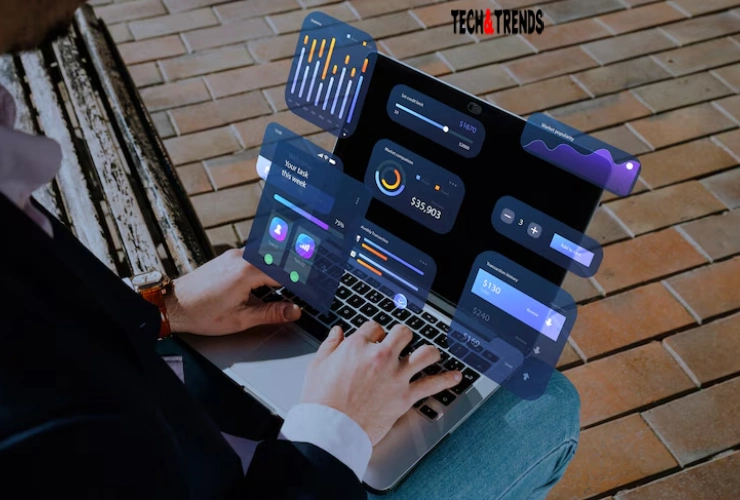Resource management software is a digital tool designed to help businesses and organizations efficiently allocate, track, and optimize their resources. Resources can include people, equipment, finances, and even time. I ensure that I use every resource in the best way possible to reduce waste and increase productivity
In today’s fast-paced business world, managing resources manually can be overwhelming and error-prone. Resource Scheduling Software simplifies this process by providing a central platform where managers can see what resources are available, assign them to projects, and monitor their usage. This leads to better decision-making and smoother project execution.
2. Key Features of Resource Management Software
Modern resource management software comes with a variety of features that make resource allocation and tracking easier:
- Centralized Dashboard: Offers a complete view of all resources, including their availability, skills, and current assignments.
- Automated Scheduling: Assigns resources to projects based on availability and skill set, reducing manual work and scheduling conflicts.
- Real-Time Tracking: Monitors resource usage and project progress as it happens, allowing for quick adjustments if needed.
- Custom Reporting: Generates detailed reports on resource utilization, project status, and budget consumption.
- Integration with Other Tools: Connects with project management, HR, and financial systems for seamless data sharing.
- Forecasting and Analytics: Predicts future resource needs based on current and past data, helping with long-term planning.
Please visit our site for more informative articles.
3. How Workforce Management Software Optimizes Utilization
Optimizing resource utilization means making sure every resource is used as efficiently as possible. Workforce Management Software achieves this in several ways:
- Matching Skills to Tasks: The software identifies the best-suited employees for each task based on their skills and availability, ensuring that work is done by the right people.
- Avoiding Overbooking: By tracking all assignments in one place, the software prevents double-booking and workload imbalances, which can lead to burnout or underutilization.
- Balancing Workloads: Managers can see who is overloaded and who has capacity, allowing them to redistribute tasks for a more balanced workload.
- Reducing Downtime: The system alerts managers when resources are idle, so they can be quickly reassigned to other projects, minimizing wasted time.
With these capabilities, organizations can ensure that every resource is contributing to its fullest potential.
4. Benefits for Businesses and Teams
Implementing Resource management integration brings multiple benefits:
- Increased Efficiency: Automated scheduling and tracking save time and reduce administrative work, freeing up staff for more important tasks.
- Cost Savings: Better utilization of resources means less money spent on overtime, contractors, or unnecessary purchases.
- Improved Project Delivery: Projects are more likely to be completed on time and within budget when resources are managed effectively.
- Enhanced Employee Satisfaction: Balanced workloads and clear task assignments help prevent burnout and improve job satisfaction.
- Greater Visibility: Managers and team members have a clear understanding of who is working on what, which improves accountability and transparency.
These benefits help organizations stay competitive and deliver better results to their clients and stakeholders.
5. Improving Project Planning and Delivery
Resource management integration plays a crucial role in project planning and delivery:
- Accurate Forecasting: By analyzing past data and current workloads, the software helps managers predict future resource needs and plan accordingly.
- Streamlined Scheduling: Automated tools make it easy to assign resources to projects, adjust timelines, and handle changes without confusion.
- Risk Reduction: Early identification of resource shortages or conflicts allows managers to address issues before they impact project delivery.
- On-Time Completion: With the right resources in place, projects are more likely to finish on schedule, leading to higher customer satisfaction.
These improvements make it easier for organizations to handle multiple projects at once and adapt to changing demands
6. Enhancing Collaboration and Communication
Effective resource management is not just about numbers—it’s also about people working together:
- Shared Information: Team members can access up-to-date project details, schedules, and resource assignments from a central platform.
- Improved Communication: Automatic notifications and updates keep everyone informed about changes, reducing misunderstandings and delays.
- Better Teamwork: When everyone knows their roles and responsibilities, collaboration becomes smoother and more productive.
By fostering better communication and teamwork, Resource forecasting and analytics helps organizations achieve their goals more efficiently.
7. Real-Time Data and Reporting Capabilities
One of the biggest advantages of Resource forecasting and analytics is access to real-time data:
- Live Dashboards: Managers can monitor resource usage, project progress, and budget consumption as it happens.
- Custom Reports: The software can generate reports tailored to different stakeholders, from detailed availability charts for project managers to high-level utilization summaries for executives.
- Data-Driven Decisions: With accurate, up-to-date information, organizations can make better decisions about resource allocation and project planning.
Real-time insights help organizations respond quickly to changes and continuously improve their processes.
8. Challenges and Best Practices
While Project scheduling tools offers many benefits, there are also challenges to consider:
- Adoption and Training: Teams may need time and training to get comfortable with new software.
- Data Accuracy: The system is only as good as the data entered, so it’s important to keep information up to date.
- Change Management: Moving from manual methods to digital tools can be a big shift for some organizations.
To get the most out of Project and Resource Planning Software follow these best practices:
- Start with Clear Goals: Define what you want to achieve with the software.
- Involve Key Stakeholders: Get input from all departments that will use the system.
- Provide Training: Ensure everyone knows how to use the software effectively.
- Monitor and Adjust: Regularly review usage and make adjustments as needed.
By addressing these challenges and following best practices, organizations can maximize the value of their investment.
9. Future Trends in Project and Collaboration and communication tools
Project and Collaboration and communication tools continues to evolve, with new trends shaping its future:
- Artificial Intelligence (AI): AI-powered tools can predict resource needs, suggest optimal allocations, and automate routine tasks.
- Integration with Other Systems: Deeper integration with project management, HR, and financial software provides a more complete view of resources.
- Mobile Access: Mobile-friendly platforms allow managers and team members to access information and make updates from anywhere.
- Advanced Analytics: More sophisticated reporting and analytics help organizations uncover patterns and make strategic decisions.
As these trends develop, Project scheduling tools will become even more powerful, helping organizations optimize their resources and achieve greater success.
Conclusion
Resource management is an essential tool for businesses aiming to optimize how they use their resources. By automating scheduling, tracking, and allocation, it helps teams work more efficiently and projects run smoothly. This leads to cost savings, better project delivery, and happier employees.
As technology advances, Project scheduling tools continues to evolve, offering smarter analytics, AI-driven forecasting, and seamless integration with other business tools. Investing in this software empowers organizations to stay competitive and adapt quickly to changing demands.


Comments are closed.